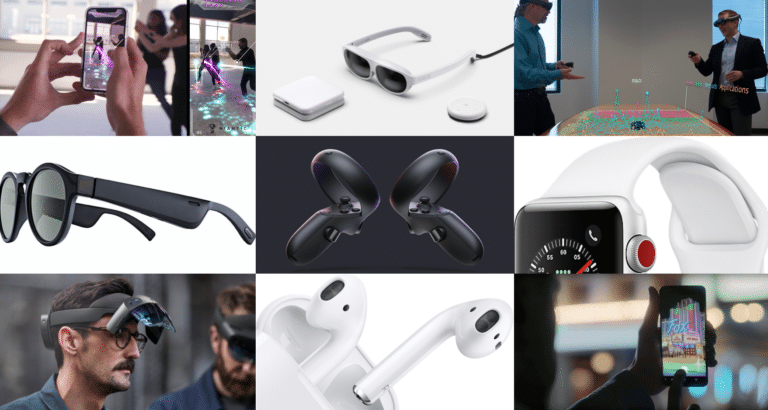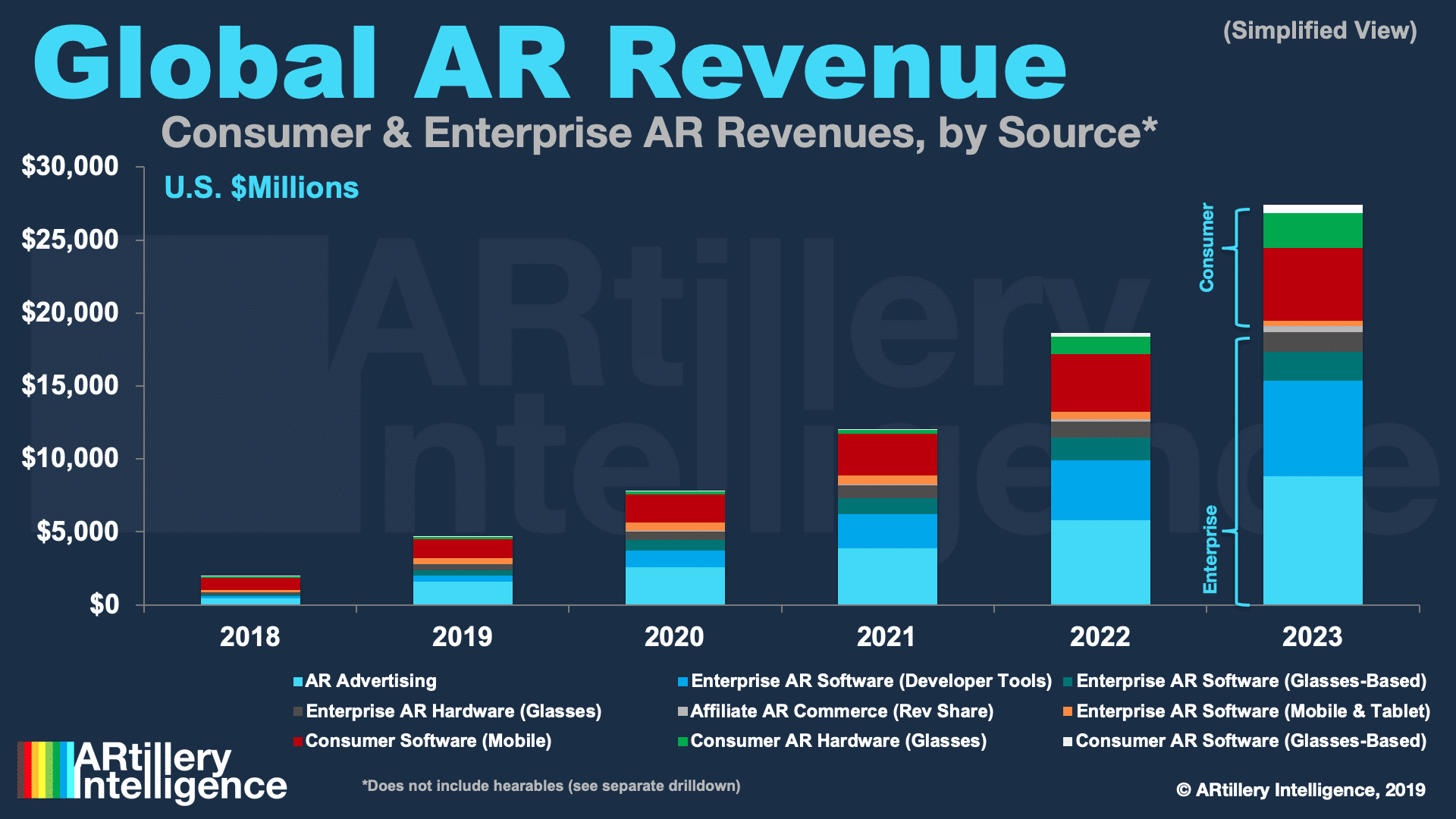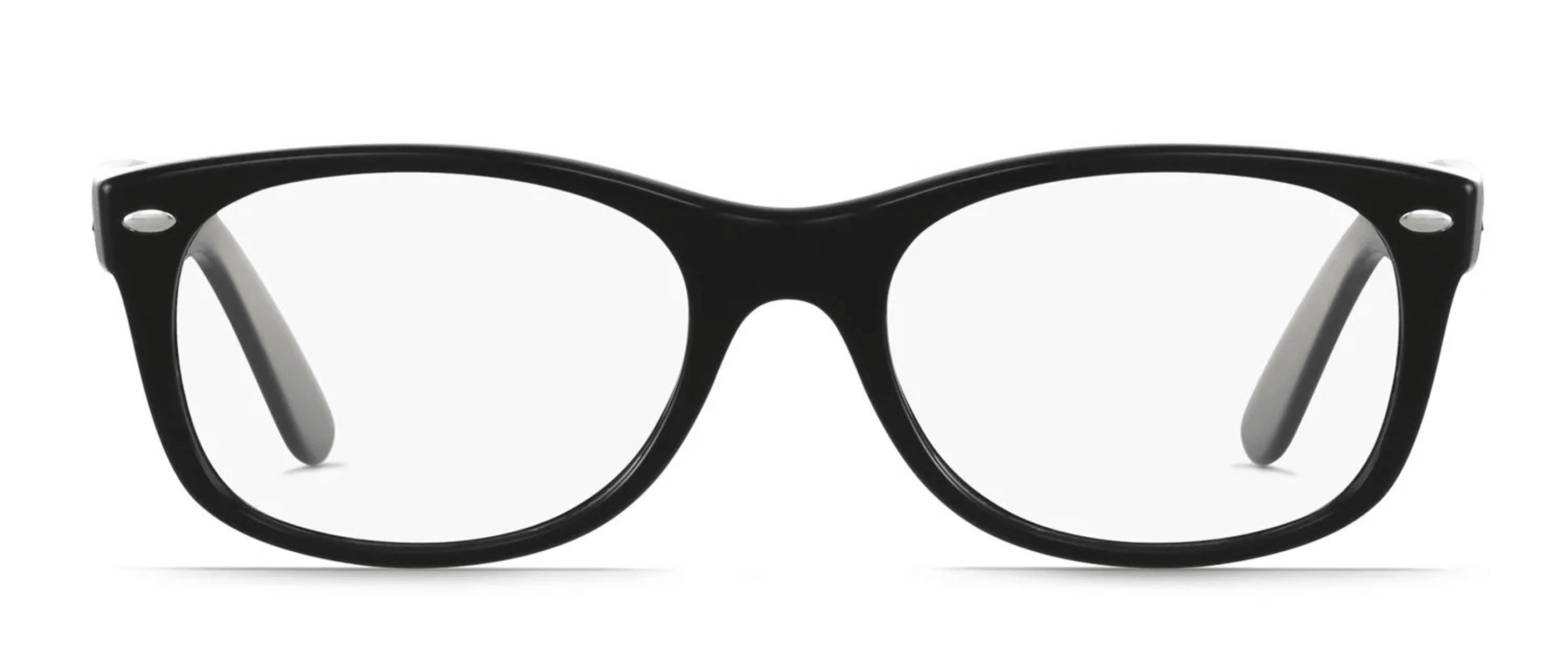
This post is adapted from ARtillery Intelligence’s report, Spatial Computing: 2019 Lessons, 2020 Outlook. It includes some of its data and takeaways. More can be previewed here and subscribe for the full report.
At this stage of spatial computing’s lifecycle, it’s becoming clear that patience is a virtue. After passing through the boom and bust cycle of 2016 and 2017, the last two years were more about measured optimism in the face of the sobering realities of industry shakeout and retraction.
At the precipice of 2020, that leaves the question of where we are now? Optimism is still present but AR and VR players continue to be tested as high-flying prospects like ODG, Meta and Daqri dissolve. These events are resetting expectations on the timing and scale of revenue outcomes.
But there are also confidence signals. 2019 was more of a “table-setting” year for our spatial future and there’s momentum building. Brand spending on sponsored mobile AR lenses is a bright spot, as is Apple AR glasses rumors. And Oculus Quest is a beacon of hope on the VR side.

The “When?”
After covering the “Why?” of Apple’s AR glasses, what about the “when?” We’ve eschewed 2020 rumors and based projections in our AR Revenue Forecast on a mid-2022 market entrance. This could involve a fall 2021 unveiling and following-year launch, as Apple product cycles often go.
As shown in the revenue projections below, this will cause the market to inflect starting in 2022 and more so in 2023. The effect will not only be for Apple’s own AR glasses, but to mainstream the product category — a la Apple’s signature halo effect — thereby raising all boats.
We base this 2022 prediction on a few factors. For one, the underlying technology isn’t yet there for a compelling-enough UX that fits Apple’s high bar for style and design. It has world-leading industrial design, and anything launched in 2020 wouldn’t meet that standard.
Apple is also rarely early to market, which 2020 certainly would be. Its signature move is to arrive late and outperform earlier entrants with superior design, mainstream appeal, marketing and supply-chain economies of scale (see: Mp3 players, smartphones, tablets… etc.).
These theories about timeline were validated by early-November reports that Apple will launch limited-functionality AR glasses in the 2022 timeframe. These will iterate over time and have a parallel track for a sleeker and more multi-purpose model in 2023.

The “What?”
After examining the “why?” and the “when?” for Apple’s AR Glasses initiatives, that leaves the question of “What?” As indicated above, internal Apple documentation has leaked which signals hybrid AR/VR glasses in 2022, followed by sleeker AR glasses in 2023.
These clues potentially carry more weight than other rumors that are based on supply chain indicators. In this case, the report comes from an announcement made to an assembly of more than 1,000 Apple employees. This provides some additional veracity.
Triangulating this clue with others we’ve tracked, Apple could release a “lean back” entertainment wearable in 2022. This will be for isolated/occluded uses like watching movies. Then it will launch a more fashionable (though less-spec’d) “all-day” wearable in 2023.
What gives us this idea? If we look elsewhere in Apple’s IP, there’s a patent filing for variable-opacity lenses. Similar to some prescription glasses, these are meant to dynamically shift opacity and shade level based on factors like ambient light, or manual controls.
According to the patent, they “selectively darken portions of the real-world light from view.” This involves tiny mirrors that direct ultraviolet light to individual pixels to dim or block light and “allow improved contrast when displaying computer-generated content over the real-world objects.”

Multimodal Approach
The reason this would align with an entertainment wearable is that opacity would make glasses optimized for high-contrast entertainment like watching a movie. This sidesteps AR’s inherent challenge that optical combiners can’t show the color black, and other colors are washed out.
At the same time, entertainment won’t be a silver bullet, so opacity ranges could accommodate variable use cases that include utilities. Low opacity ranges could be optimal for a heads-up notification layer for iOS content (messages, email and opt-in alerts).
Synthesizing these use cases, imagine you’re at the airport, where it’s fitting for low-opacity AR notifications like flight info. But when you board and reach 30,000 feet, you can zone out and watch a movie at high opacity ranges, all without fumbling with several screens and tray tables.
In addition to the above clues, other factors support the outcome for a potential variable-opacity multimodal device. One, there’s still no killer app for AR — something Apple hoped to jumpstart with ARkit. This will inhibit consumers’ motivation to buy AR glasses.
So it makes sense to acclimate the world to AR through the training wheels of a familiar use case… watching TV & movies. Apple is also motivated to create more viewing time for iTunes, TV+ and other digital content as it diversifies revenue due to decelerating iPhone sales growth.

Connecting Dots
In total, this multimodal approach could be compelling while allowing Apple to acclimate consumers to AR glasses through utility, convenience and familiar activities. Once everyone is comfortable with the hardware, it could activate world-immersive AR in 2023.
Lastly, this aligns with observations of other influential market watchers. Most notably, Charlie Fink predicted at the May AWE conference that Apple will introduce the first version of its AR glasses as an entertainment wearable. This aligns with the above clues that have subsequently leaked.
“What if it’s not really AR the way we’re thinking about it… maybe it’s a media consumption machine… it’s like you just bought the most high-definition big-screen TV in the world even though you might live in a 600 square foot apartment. So I think it’s very possible that this is where Apple is going and they will iterate their way out of it as 5G improves.”
All of the above is qualified by the caveat that it’s speculative, and doesn’t address variables like field of view and heat. But clues align conceptually. In the end, Apple’s eventual play will be something none of us speculated but could have shards of disparate predictions.
Check out the full report here.
For deeper XR data and intelligence, join ARtillery PRO and subscribe to the free AR Insider Weekly newsletter.
Disclosure: AR Insider has no financial stake in the companies mentioned in this post, nor received payment for its production. Disclosure and ethics policy can be seen here.
